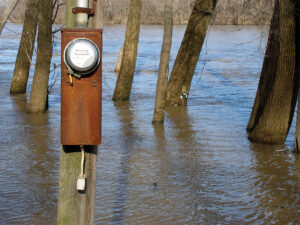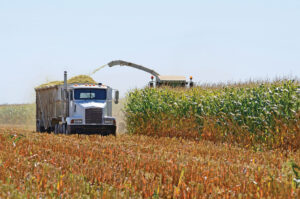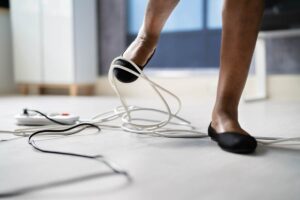If you live in a high risk area, familiarize yourself with your community-specific evacuation plans, shelter areas and warning signals.
Flooding is not only one of the most frequent weather-related natural disasters, but it can also occur in any U.S. state or territory. Its causes include heavy rains, snow melt, rising river levels and storm surge. Whether flooding occurs over a long period of time or quickly, the damage can be devastating. To help you stay safely afloat, Safe Electricity shares safety tips on preparation, alerts, and how to avoid dangers after a flood.
In 2014, the National Weather Service reported that flash and river floods claimed 38 lives. This was below the 10-year average, which is 71 fatalities per year (as measured from 2005 to 2014), and the 30-year average of 81 fatalities per year. Yet approximately 75 percent of all presidential disaster declarations are related to flooding.
Prepare to stay safe. Familiarize yourself with your area’s flood history and risk. If you live in a high risk area, familiarize yourself with your community-specific evacuation plans, shelter areas and warning signals. It is best to be prepared, so have an emergency kit assembled with items such as water, food, medicine, batteries, flashlight, weather radio and first aid kit.
It is also important to keep informed on weather conditions and be aware of the different types of alerts, including:
• Flood watch – This means that the conditions are likely for flooding. Be alert.
• Flood warning – This means that flooding will soon occur or is already occurring. Move to higher ground immediately.
If you live in a high flood risk area for which a flood watch is given, prepare your home and family for possible evacuation. To prepare your home for electrical safety in the event of an evacuation, turn off your main circuit breaker. Unplug all electrical appliances and, if possible, move larger appliances to higher ground or onto concrete blocks. If an evacuation order is called for your area, respond immediately.
In 2015, a mother and daughter were found unresponsive outside their flooded home in Maryland. Nearby, police found a portable sump pump submerged in water. According to television station WJLA, the water, charged with electricity from the sump pump, is suspected to have electrocuted the mother and daughter after heavy rains flooded the area.
“The prospect of an electrical accident is probably not top of mind when you are dealing with flooding in your home, but it is the first thing you should think of before you step into a flooded area,” says John Lowrey, Safe Electricity Advisory Board member. “If there is any chance the water could be energized, do not enter the area.”
Water and electricity make a dangerous combination, so keep these safety tips in mind:
• If your home has flooded, and the electricity was not turned off beforehand, do not enter any room where water may be in contact with electrical equipment or outlets.

• Keep in mind that electrical equipment does not have to be visibly arcing or sparking to be dangerous.
• Never attempt to turn off power at the breaker box if you must stand in water to do so. If you cannot reach your breaker box safely, call your electric utility to shut off power at the meter.
Lowrey reminds those affected by floods to practice safety after the water has receded. “Have an electrician check the condition of your home before you turn the power on after a flood. Before turning on an appliance that has been wet, make sure it has been inspected by a service repair worker.”
During cleanup efforts, remember to keep electric tools and equipment at least 10 feet away from wet surfaces. Do not use electric yard tools if it is raining or the ground is wet.
For more safety tips, visit SafeElectricity.org.










